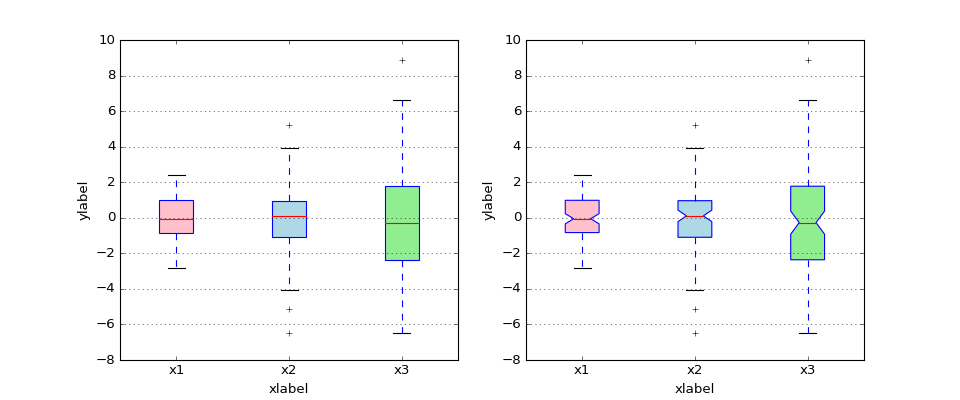
Learn what to expect in the new updates

(Source code, png, hires.png, pdf)

# Box plots with custom fill colors
import matplotlib.pyplot as plt
import numpy as np
# Random test data
np.random.seed(123)
all_data = [np.random.normal(0, std, 100) for std in range(1, 4)]
fig, axes = plt.subplots(nrows=1, ncols=2, figsize=(12, 5))
# rectangular box plot
bplot1 = axes[0].boxplot(all_data,
vert=True, # vertical box aligmnent
patch_artist=True) # fill with color
# notch shape box plot
bplot2 = axes[1].boxplot(all_data,
notch=True, # notch shape
vert=True, # vertical box aligmnent
patch_artist=True) # fill with color
# fill with colors
colors = ['pink', 'lightblue', 'lightgreen']
for bplot in (bplot1, bplot2):
for patch, color in zip(bplot['boxes'], colors):
patch.set_facecolor(color)
# adding horizontal grid lines
for ax in axes:
ax.yaxis.grid(True)
ax.set_xticks([y+1 for y in range(len(all_data))], )
ax.set_xlabel('xlabel')
ax.set_ylabel('ylabel')
# add x-tick labels
plt.setp(axes, xticks=[y+1 for y in range(len(all_data))],
xticklabels=['x1', 'x2', 'x3', 'x4'])
plt.show()
Keywords: python, matplotlib, pylab, example, codex (see Search examples)